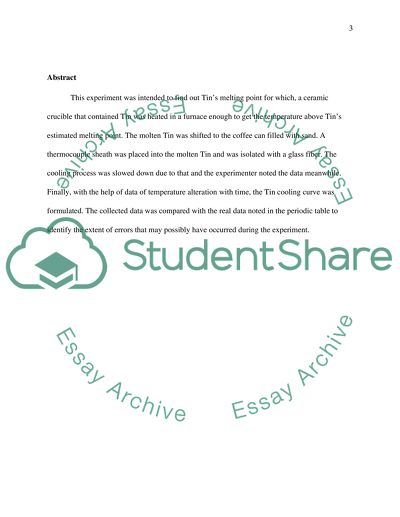Tin Melting Experiment Lab Report Example | Topics and Well Written Essays - 500 words. Retrieved from https://studentshare.org/chemistry/1410869-re-write-lab
Tin Melting Experiment Lab Report Example | Topics and Well Written Essays - 500 Words. https://studentshare.org/chemistry/1410869-re-write-lab.


